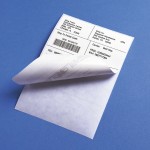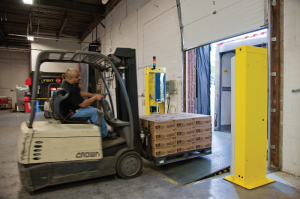Wasp Barcode Technologies: The Barcode Solution People
What is RFID and How Does it Work?
We're often asked, "What is RFID and how does it work?"
Simply stated, RFID (Radio Frequency Identification) technology is similar to barcodes in that it is an automatic identification system used to track and capture information about products, assets, and inventory. But instead of using barcodes, it embeds tiny microchips and antennas in
RFID tags, which contain rich data about items.
Passive vs. active tags
[caption id="attachment_4801" align="alignright" width="150"]

Microchips are embedded into RFID tags so they can be read using radio signals. Some tags will also have barcodes for backup, although most RFID tags do not.[/caption]
Using an antenna, an RFID reader transmits a radio signal, to which the tag responds by sending back the information stored in the microchip. It does so proactively or passively, depending upon the configuration and location.
- Active RFID continuously pushes data to an active RFID reader using tags with batteries in them.
- Passive RFID does not need a power source to send and receive signals. Instead, the tags must receive the radio signal from the passive reader before they will respond.
Active and passive RFID tags operate on different radio frequencies and can be purchased with different varying signal strengths to accommodate the read ranges of fixed and handheld readers.
Fixed vs. handheld readers
A fixed RFID reader is attached to one or more antennas and usually placed in a central location so you can see what is in that area at any given time. Without the need for human intervention, fixed readers can identify objects as they move through a doorway or dock because RFID transmits signals through most surfaces, including wooden pallets and containers.
[caption id="attachment_4810" align="alignleft" width="300"]

Fixed RFID readers can capture information about an entire pallet of goods while moving through the supply chain.[/caption]
Optimal for active RFID,
fixed active readers can read active tags at distances greater than 300 feet. (Some readers can even read tags when they are thousands of feet away.)
Handheld RFID readers have a single antenna embedded in them, which makes the mobile devices ideal for passive RFID. Because the read range for passive handhelds is up to 20 feet, they are commonly used to manage inventory at the item level. For example in retail inventory management, retailers can point a reader at a group of clothing displayed on the floor and instantly know which colors and sizes need replenishing.
In warehouses, companies easily find misplaced items and assets using passive RFID and handheld readers.
Ideal applications
RFID tags adhere soundly to dry surfaces and cardboard, although you can purchase specialty tags for metal and plastic items. And because its signals transmit through most surfaces—excluding metal—RFID is ideal for:
- Supply chain management where groups of items stored in containers in warehouses or manufacturing plants are quickly scanned in storage and while moving through production and distribution
- Inventory management where individual items—such as clothing on a retail floor or misplaced assets in warehouses and other businesses—can be accurately replenished and located without negatively impacting operations
Is RFID right for me?
Like barcodes, RFID can be effective, efficient tracking solutions, depending upon your use. If it is important that you meet the following requirements, then RFID might be a good solution for you:
- Capture data without human intervention
- Instantly read tags through packing materials or containers
- Read hundreds of tags at once without them being in your direct line of sight
That said, convenient data capture isn’t the only consideration when deciding whether to use RFID, which:
- Nearly always requires custom configurations
- Requires purchases of additional hardware for proper installation
- Is expensive to maintain due to the high costs of RFID tags
Want to learn more?
Get answers to frequently asked questions about RFID.




